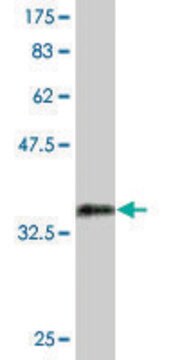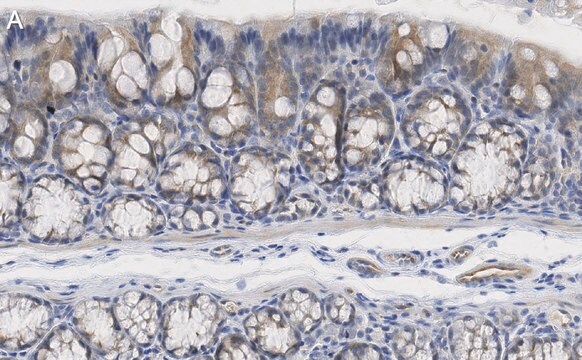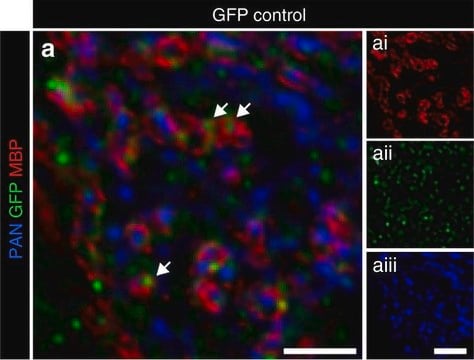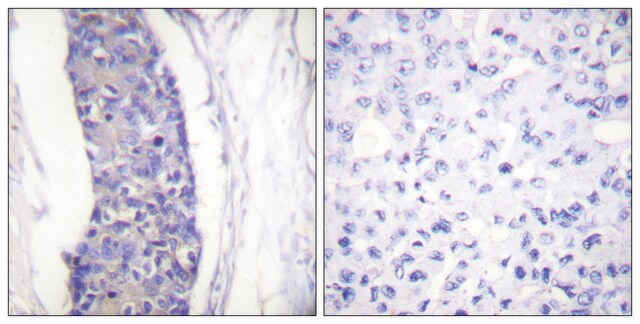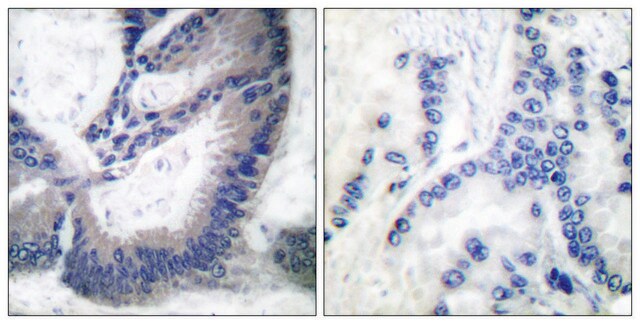AB5382
Anti-Nitric Oxide Synthase II Antibody
serum, Chemicon®
Sinonimo/i:
NOS II, iNOS
About This Item
Prodotti consigliati
Origine biologica
rabbit
Livello qualitativo
Forma dell’anticorpo
serum
Tipo di anticorpo
primary antibodies
Clone
polyclonal
Reattività contro le specie
mouse, rat
Produttore/marchio commerciale
Chemicon®
tecniche
immunocytochemistry: suitable
immunohistochemistry: suitable
western blot: suitable
N° accesso NCBI
N° accesso UniProt
Condizioni di spedizione
dry ice
modifica post-traduzionali bersaglio
unmodified
Informazioni sul gene
mouse ... Nos2(18126)
rat ... Nos2(24599)
Descrizione generale
Specificità
Immunogeno
Applicazioni
1:5000 (ABC) dilution of a previous lot was used on tissue sections (rat liver).
Immunocytochemistry:
1:50,000 dilution of a previous lot was used on cultured cells.
Western blot:
1:5,000 (ECL). The antibody has been used successfully on rat liver. It is not recommended for use on rat brain extracts since unidentified bands may be present.
Optimal working dilutions must be determined by end user.
Neuroscience
Oxidative Stress
Qualità
Western Blot Analysis:
1:1000 dilution of this antibody detected INOS on 10 µg of Mouse liver lysates.
Descrizione del bersaglio
Stato fisico
Stoccaggio e stabilità
Handling Recommendations: Upon first thaw, and prior to removing the cap, centrifuge the vial and gently mix the solution. Aliquot into microcentrifuge tubes and store at -20°C. Avoid repeated freeze/thaw cycles, which may damage IgG and affect product performance.
Risultati analitici
Macrophages, liver lysates
Altre note
Note legali
Esclusione di responsabilità
Non trovi il prodotto giusto?
Prova il nostro Motore di ricerca dei prodotti.
Codice della classe di stoccaggio
10 - Combustible liquids
Classe di pericolosità dell'acqua (WGK)
WGK 1
Certificati d'analisi (COA)
Cerca il Certificati d'analisi (COA) digitando il numero di lotto/batch corrispondente. I numeri di lotto o di batch sono stampati sull'etichetta dei prodotti dopo la parola ‘Lotto’ o ‘Batch’.
Possiedi già questo prodotto?
I documenti relativi ai prodotti acquistati recentemente sono disponibili nell’Archivio dei documenti.
Articoli
The term neurodegeneration characterizes a chronic loss of neuronal structure and function leading to progressive mental impairments.
Il team dei nostri ricercatori vanta grande esperienza in tutte le aree della ricerca quali Life Science, scienza dei materiali, sintesi chimica, cromatografia, discipline analitiche, ecc..
Contatta l'Assistenza Tecnica.
